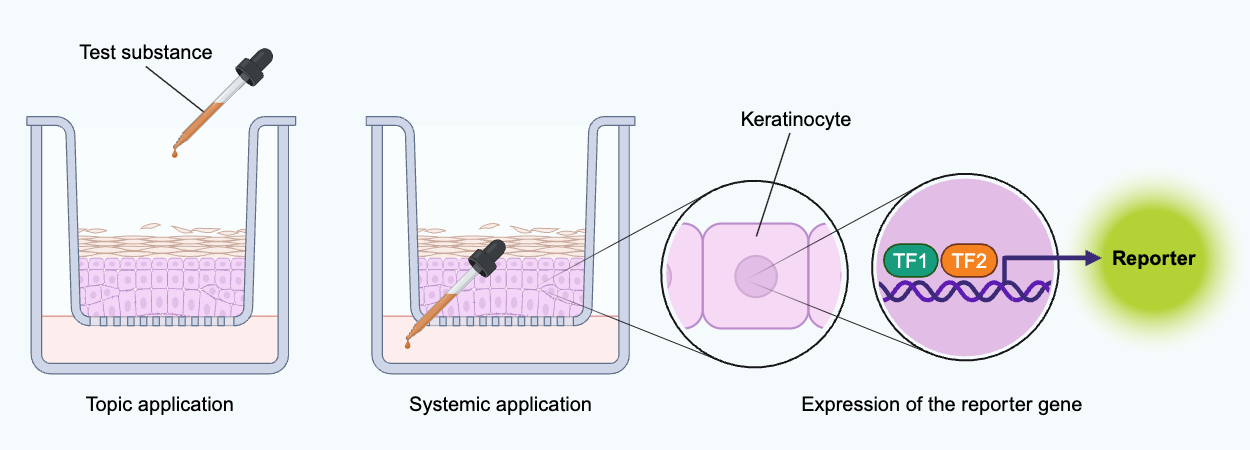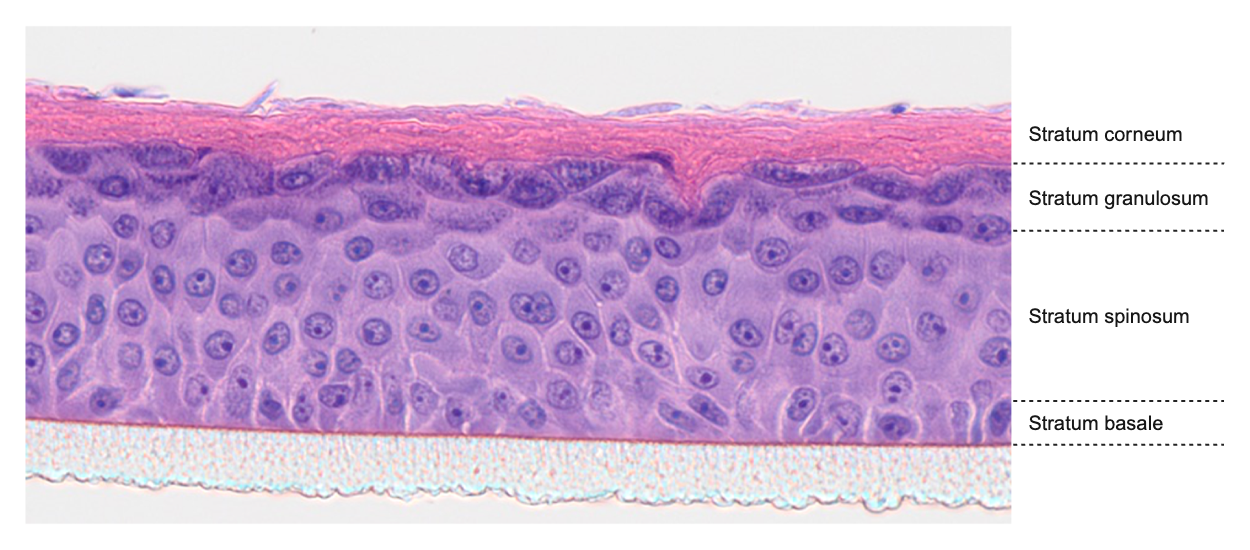We offer a portfolio of patented reporter skin models (EP 2 041 172) for the detection of typical cell stress responses such as inflammation, sensitization or ER stress – i.e. stress triggered by defective protein folding in the endoplasmic reticulum (ER).
These in-vivo reconstituted epidermal and full-thickness skin models with an intact skin barrier are based on immortalized primary keratinocytes, whose use guarantees high donor-independent reproducibility. The activation of a specific cellular stress signaling pathway in these immortalized primary keratinocytes can be read out quickly and easily via a reporter protein that has been stably integrated into the genome using a reporter construct. In this way, both skin-damaging and skin-regenerating or skin-protecting substance effects can be specifically identified and evaluated:
Reporter skin models for the detection of anti-/inflammatory effects
are reconstructed epidermis and full-thickness skin models based on NF-kB reporter keratinocytes for the evaluation of the inflammation-inducing or -inhibiting potential of substances via the activation of the NF-kB signaling pathway.
As a central mediator of inflammatory reactions, the transcription factor NF-kB induces the expression of various pro-inflammatory genes and is involved in the regulation of inflammasomes [1] .
Reporter skin models for the detection of sensitizing and anti-/oxidative effects
are reconstructed epidermal and full-thickness skin models based on Nrf2 reporter keratinocytes to assess the sensitizing/oxidative stress-inducing potential of substances via activation of the Nrf2 pathway.
The transcription factor NRf2 plays a crucial role as a master regulator in maintaining the cellular redox balance in the adaptive response to oxidative stress, which can lead to sensitization to the stress-inducing substance [2].
Reporter skin models for the detection of ER stress-inducing effects
are reconstructed epidermal and full-thickness skin models based on stress sensor keratinocytes to assess the ER stress-inducing potential of substances via activation of specific transcription factors that are significantly involved in cell stress. ER stress is caused by the accumulation of incorrectly folded proteins in the endoplasmic reticulum (ER) [3].
 Fraunhofer Institute for Interfacial Engineering and Biotechnology IGB
Fraunhofer Institute for Interfacial Engineering and Biotechnology IGB



